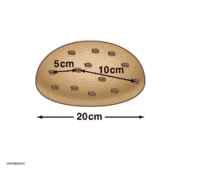
Photo from wikipedia
This paper presents a simple and novel technique to enhance the time constant of a source follower (SF)-based low-pass filter (LPF) for front-end processing of biomedical signals. The proposed technique… Click to show full abstract
This paper presents a simple and novel technique to enhance the time constant of a source follower (SF)-based low-pass filter (LPF) for front-end processing of biomedical signals. The proposed technique reduces the capacitor value significantly, which in turn reduces the area of the circuit. Inherent negative feedback and lower number of transistors in this circuit result in good linearity and dynamic range even with low power supply of 0.8 V. A second-order LPF of cutoff frequency ( $$f_{-3\,{\mathrm{dB}}}$$ f - 3 dB ) of 100 Hz is designed by cascading the proposed NMOS and PMOS SF LPFs. Cutoff frequency can be tuned linearly from 10 Hz to 1 kHz by varying the bias current and, hence, can be fit into the desired frequency range of different bio-potentials. The filter, designed in UMC 65 nm process, occupies an area of $$0.008\,\hbox {mm}^2$$ 0.008 mm 2 . It offers a dynamic range of 61.85 dB while consuming a power as low as 8 nW. Figure of merit of the filter is as low as $$3.23*10^{-14}\,\hbox {J}$$ 3.23 ∗ 10 - 14 J which is better than many other filter designs reported in the literature.
Journal Title: Circuits, Systems, and Signal Processing
Year Published: 2020
Link to full text (if available)
Share on Social Media: Sign Up to like & get
recommendations!